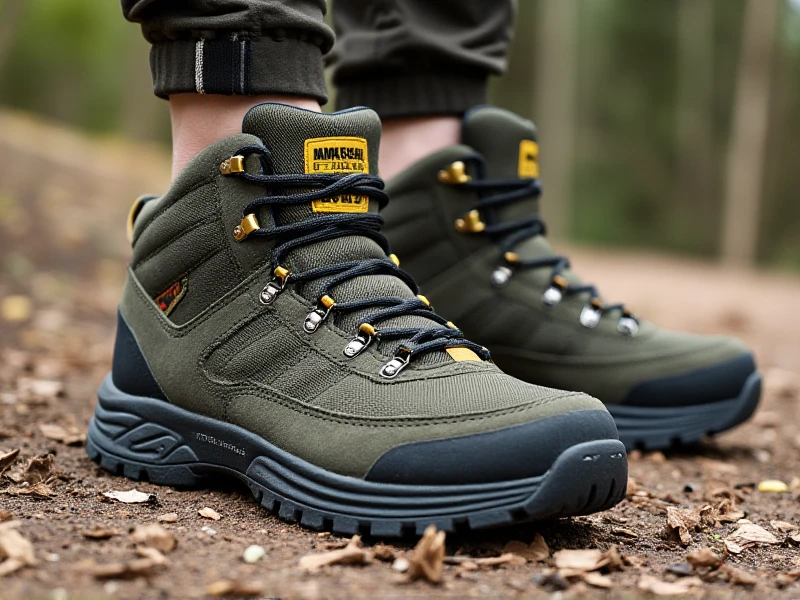Your Trail Companion: Choosing the Best Men's Hiking Shoes
2025-06-12

Finding the right pair of men's hiking shoes isn't just about comfort; it's about performance, safety, and maximizing your enjoyment on the trail. With a confusing array of options available – from lightweight shoes to burly boots – knowing your needs is the first step to picking your perfect outdoor partner. Let's break down the essentials.
Crucial Features to Consider
1. Terrain & Trail Type: Your hiking environment dictates the shoe.
Well-Groomed Trails/Lightweight Hiking: Flexible trail runners or minimalist hiking shoes offer agility and breathability, ideal for day hikes on less technical paths.
Rocky/Rugged Terrain/Bushwhacking: Opt for mid-top or full-height hiking boots. Prioritizing stability, rugged soles (deep lugs), ankle support, and durable materials (like full-grain leather or reinforced synthetics) is key to navigating demanding landscapes safely.
Variable Conditions/Wet/Muddy Trails: Waterproof membranes (GORE-TEX or similar) are essential. Look for aggressive lug patterns designed to shed mud and maintain grip on slippery surfaces like wet rocks and roots. A durable, protective toe cap also becomes more critical here.
Multi-Day Treks/Heavy Loads: Choose sturdy, supportive backpacking boots designed to manage the significant weight. Look for features like a rigid shank, superior cushioning, and higher ankle support.
2. Support & Stability:
Ankle Support: Low-cut shoes offer maximum freedom but less support; mid-cut provides a good balance. High-cut boots deliver maximum stability, crucial for uneven terrain or carrying loads. Base your choice on your ankle strength and the trail difficulty. Stability often comes from a robust sole and chassis, not just height.
Internal Support: Features like a semi-rigid or rigid shank offer longitudinal stability over rocky terrain, protecting the arches of your feet. Pay attention to the midsole construction – EVA offers cushioning, while polyurethane provides greater durability and support.
3. Traction:
Outsole: The quality and depth of the lug pattern make a dramatic difference. Vibram® rubber soles are renowned for durability and grip. Look specifically for lugs designed for the surfaces you hike most – sharp, widely spaced lugs excel in soft ground and mud, while flatter lugs might grip rock better. A heel brake zone aids descent control.
4. Water Management:
Waterproof vs. Breathable: Waterproof membranes keep water out but reduce breathability, sometimes leading to sweaty feet in warm weather. Non-waterproof, ventilated shoes are highly breathable for quick drying after streams or perspiration but won't protect against immersion. Choose based on your typical climate and conditions. Remember: no membrane is truly breathable once soaked inside.
Materials: Leather offers inherent water resistance but requires maintenance. Synthetics are lighter and often dry faster but may be less durable.
5. Fit Is Everything:
Shop Late: Feet swell during the day/activity. Try on shoes in the late afternoon.
Socks: Wear the thick hiking socks you plan to use.
Space: Ensure about ½ inch (a thumb's width) of space beyond your longest toe (often the big toe). There should be no heel slippage and minimal side-to-side movement within the heel cup. Your toes shouldn't jam against the front during descents.
Width: Many brands offer specific width options to accommodate wider feet.
6. Durability & Materials:
Upper: Full-grain leather is exceptionally durable and protective but heavier. Split-grain or Nubuck leather is lighter and often paired with mesh for breathability. Synthetics are lighter, often lower cost, and can drain water faster but may compromise longevity under rigorous use.
Protection: Look for reinforced toe caps and heel counters that enhance durability and protect your feet on rough trails.
The Importance of Weight
Hiking shoe weight significantly impacts fatigue over miles. Lighter shoes preserve energy but often sacrifice durable protection and support. Heavy boots offer robustness. Find the ideal balance for your hiking style and typical excursions.
Breaking Them In: Non-Negotiable
Never take new men's hiking shoes straight onto a challenging trail. Wear them around the house, on walks, or short errands for increasing periods over several days. Pay attention to any pressure points, uncomfortable seams, or potential blisters. Proper breaking-in is essential for a comfortable, blister-free adventure.
Maintenance Matters
Extend the life of your investment. Clean dirt and mud off after hikes. Let them air dry naturally – avoiding direct heat sources which damages materials and adhesives. Regularly treat leather with appropriate conditioners. Periodically re-waterproof models with Durable Water Repellent (DWR) treatments.
The Right Choice Enhances Every Step
Investing time in choosing the ideal pair of men's hiking shoes is an investment in countless successful adventures. By prioritizing your trail conditions, understanding the essential features – support, traction, weather protection, and especially perfect fit – you transform hiking from a struggle into a joy. Your feet, and ultimately your entire hike, will thank you for selecting footwear tailored for performance and comfort. Gear up wisely and embrace the trail!
Category: